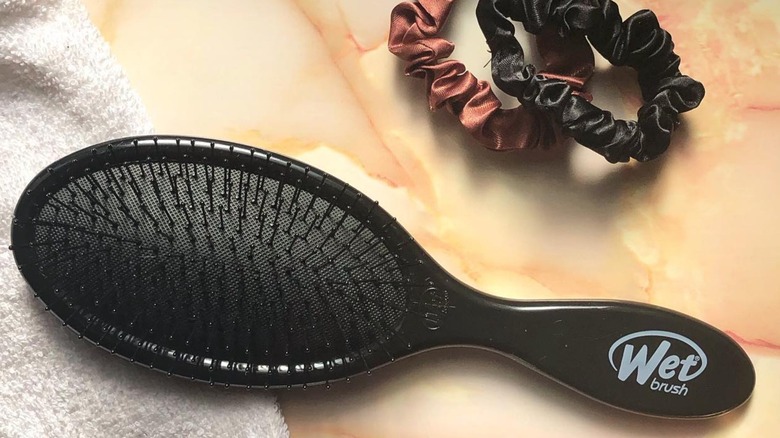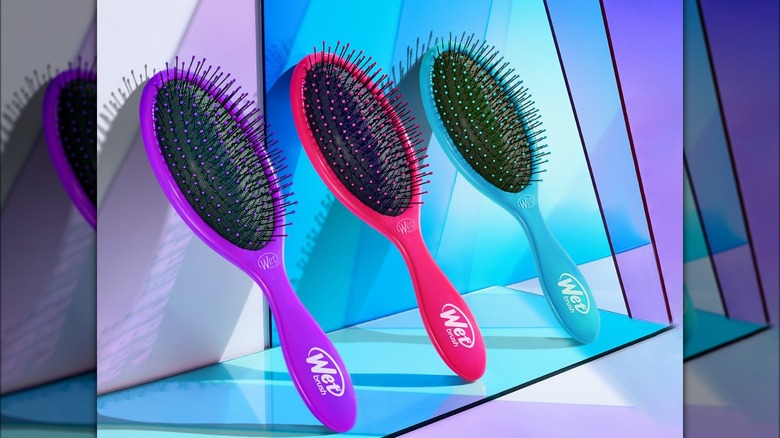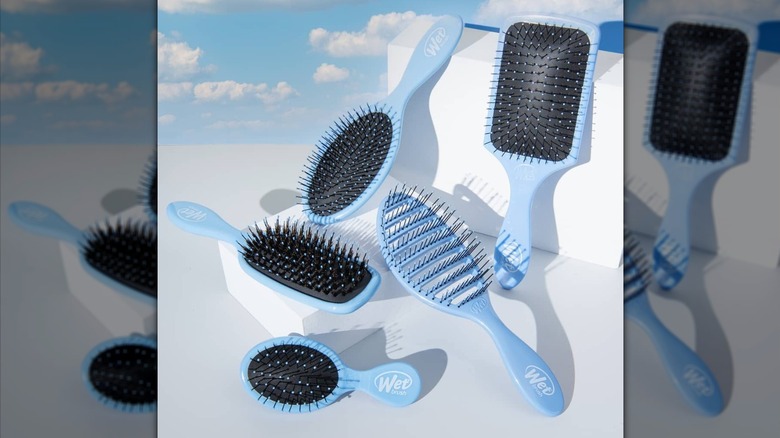What Does A Wet Brush Actually Do For Your Hair, And Is It Better Than A Regular Brush?
When it comes to hair, there's a seemingly endless amount of products promising to revitalize shine, enhance growth, or repair split ends. With so many serums, sprays, and masks to try, finding basic haircare products that work for your hair type and texture can be challenging. One allegedly revolutionary product bypasses all these modern-day technologies by returning to the roots of haircare: the hairbrush. We're talking about the Wet Brush, which was created in 2005 to ease the process of brushing wet hair, a seemingly simple promise that has nonetheless made big waves in its innovations.
You may have heard some of the hype surrounding the Wet Brush brand, with users raving about how the products have forever changed their after-shower routines or have unexpectedly improved the health of their hair. Is the product worth the hype, though? How exactly does the Wet Brush work and is it better than the alternative you already own? Let's find out.
What you need to know about the Wet Brush
We mentioned that the primary aim of the original Wet Brush, known as the Original Detangler, is to ease the brushing of wet hair. Even though after-shower hair brushing is pretty normal, experts do warn about the risks of taking bristles to wet hair. For those with non-textured and non-curly hair types, tresses are most vulnerable when wet, meaning that brushing and detangling directly after a shower can cause excess damage. Even though those with curly and textured hair are typically instructed to brush their hair while wet to maintain curl patterns and avoid breakage, that doesn't exclude them from needing the right type of tools to effectively detangle saturated locks.
The Wet Brush is designed with both hair sensitivity and detangling needs in mind, as Sonna Brado, stylist and Global Artist at KMS Hair, tells Real Simple, "The main difference is that while a normal brush is generally made with natural bristles (or a combination of natural and nylon) that are closely packed together, a wet brush is made with flexible, plastic bristles that move with the hair. She continued, "Wet brushes will also have wide spacing between the bristles so that hair moves more easily through them." These differences make the Wet Brush both easier to use and more effective in practice, typically leading to healthier hair overall, regardless of type.
How to decide if the Wet Brush is for you
Knowing the why and how of the Wet Brush, it's easier to see why so many people have fallen in love with such a seemingly simple haircare product. Since it's designed specifically for wet hair, it's more effective for post-shower detangling than other brushes. In turn, less tugging and pulling on the hair typically translates into healthier, less damaged strands.
The Wet Brush brand has also expanded over the years, offering new brush types that meet other user needs. For example, the Shine Enhancer Brush features boar bristles that create a healthy shine by spreading the hair's natural oil throughout its body. This is supposed to be specifically good for non-wash days and dry shampoo use. The Shower Detangler is another pretty popular installment that is used to spread haircare products evenly in the shower without damage. If you're a fan of in-shower treatments, this brush can be particularly helpful in distributing your sprays, glazes, and conditioners.
The last major perk of the Wet Brush is the price. The Original Detangler is only $8.99, with the Shine Enhancer Brush coming in at $9.99 and the Shower Detangler at $10.99, respectively. So, if you're tempted to buy a new brush, but aren't willing to break the bank, this brand is a generally affordable option. Other than that, only you can decide if the Wet Brush is a worthy addition to your haircare routine.


